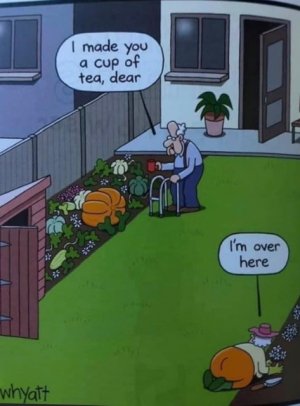Frosted Rhubarb
Is rhubarb safe to eat after nature freezes it?
REASON FOR CAUTION
Rhubarb contains oxalate, which have been reported to cause poisoning when large quantities of raw or cooked leaves are ingested. During World War I rhubarb leaves were recommended as a substitute for other veggies that the war made unavailable. Apparently there were cases of acute poisoning and even some deaths. Some animals, including goats and swine, have also been poisoned by ingesting the leaves.
FROST DAMAGE
Rhubarb hit by a frost or freeze can still be eaten provided the stalks are still firm and upright. Leaf injury may be noticeable with some brown or black discoloration on the edges. If the stems appear soft and mushy, do not eat them. Severe cold injury may cause the oxalic acid crystals in the leaves to migrate to the stalks increasing the likelihood of poisoning problems. If in doubt about the safety of eating the stalks, don't. Cut those stalks off and compost them. Allow new stalks to develop before eating, or if it is the end of the growing season, try forcing some rhubarb indoors.
Information provided by:
Tom Kalb, NDSU Extension Horticulturist
Julie Garden-Robinson, NDSU Food and Nutrition Specialist.
Is rhubarb safe to eat after nature freezes it?
REASON FOR CAUTION
Rhubarb contains oxalate, which have been reported to cause poisoning when large quantities of raw or cooked leaves are ingested. During World War I rhubarb leaves were recommended as a substitute for other veggies that the war made unavailable. Apparently there were cases of acute poisoning and even some deaths. Some animals, including goats and swine, have also been poisoned by ingesting the leaves.
FROST DAMAGE
Rhubarb hit by a frost or freeze can still be eaten provided the stalks are still firm and upright. Leaf injury may be noticeable with some brown or black discoloration on the edges. If the stems appear soft and mushy, do not eat them. Severe cold injury may cause the oxalic acid crystals in the leaves to migrate to the stalks increasing the likelihood of poisoning problems. If in doubt about the safety of eating the stalks, don't. Cut those stalks off and compost them. Allow new stalks to develop before eating, or if it is the end of the growing season, try forcing some rhubarb indoors.
Information provided by:
Tom Kalb, NDSU Extension Horticulturist
Julie Garden-Robinson, NDSU Food and Nutrition Specialist.

